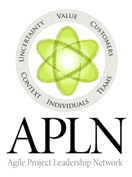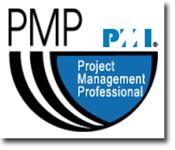"Freedom consists not in doing what we like, but in having the right to do what we ought" - Pope John Paul II
"The more you tighten your grip Tarkin, the more star systems will slip through your fingers" - Princess Leia, Star Wars
Moving towards a more agile management approach is hard. Agile is hard because it requires a tremendous amount of trust. Trust can only be developed over time and must be earned. Managers must trust their employees to work in the best interests of the business. Teams must trust their management to create a safe environment where they can be successful. We must both be looking out for each other's best interests.
Unfortunately, many organizations are not high trust environments. Controlling management hierarchies, office politics, and disempowering policies have created a culture where people expect to be told what to do instead of using their own judgment and initiative. People are not encouraged to offer their best thinking and are rewarded for playing by the rules. This slows down delivery and damages the overall effectiveness of the organization.
Businesses always demand more for less in a competitive market. This creates pressure for more productivity while at the same time productivity is being eroded. To get better results, management introduces more rules and more governance. Employees closely follow the rules because that is what is expected. This cycle continues until the management overhead becomes an impediment to completing any of the real work and no decisions can be made without management's explicit consent.
Current thinking in the project management community is reflective of this flawed paradigm. In an attempt to get better project performance, we plan more, create more documents, deliver more frequent status reports, and try to hold people accountable for tasks on a plan. We slowly begin to hold ourselves accountable for the process and lose focus on delivering real value to our customers.
This process focus becomes so overwhelming that we find ourselves with either a suffocating bureaucracy or too little real day-to-day management of the project.
Agile seeks to solve many of these problems but methodologies are not transformed overnight and cultures take time to adjust. We cannot ask managers to abandon traditional management techniques without giving them alternate means to make sure their projects are delivering value to the organization. We cannot expect team members to self-organize and be empowered when they've seen so few first-hand examples where this has been rewarded.
We need a roadmap for helping teams incrementally adopt Agile. We need a framework for building trust in an organization. This framework must start with changes people can easily get their heads around and implement without losing focus on our desired end result. The agile community has focused on where we want to go but not enough on how we plan to get there. Trust is not sufficient until we prove ourselves trustworthy.
It may sound paradoxical but the path to agility begins with structure and discipline. Our goal is to create an environment of total transparency and accountability using techniques people can begin doing immediately. Making and meeting commitments is where it all begins. Establishing a routine pattern of delivery is key. Regardless of what methodology we are using now, regardless of our current project plans, let's begin the journey by focusing on making and meeting commitments.
Link to original post on Agile Chronicles:
http://blog.versionone.net/blog/2008/01/the-road-to-agi.html
Subscribe to Leading Agile
Need training, coaching, or help leading an agile transformation?
email: mike@cottmeyer.com or call: 404.312.1471
Saturday, January 26, 2008
The Road to Agility
Labels:
Agile,
control,
Leadership,
structure,
transition
Subscribe to:
Posts (Atom)










